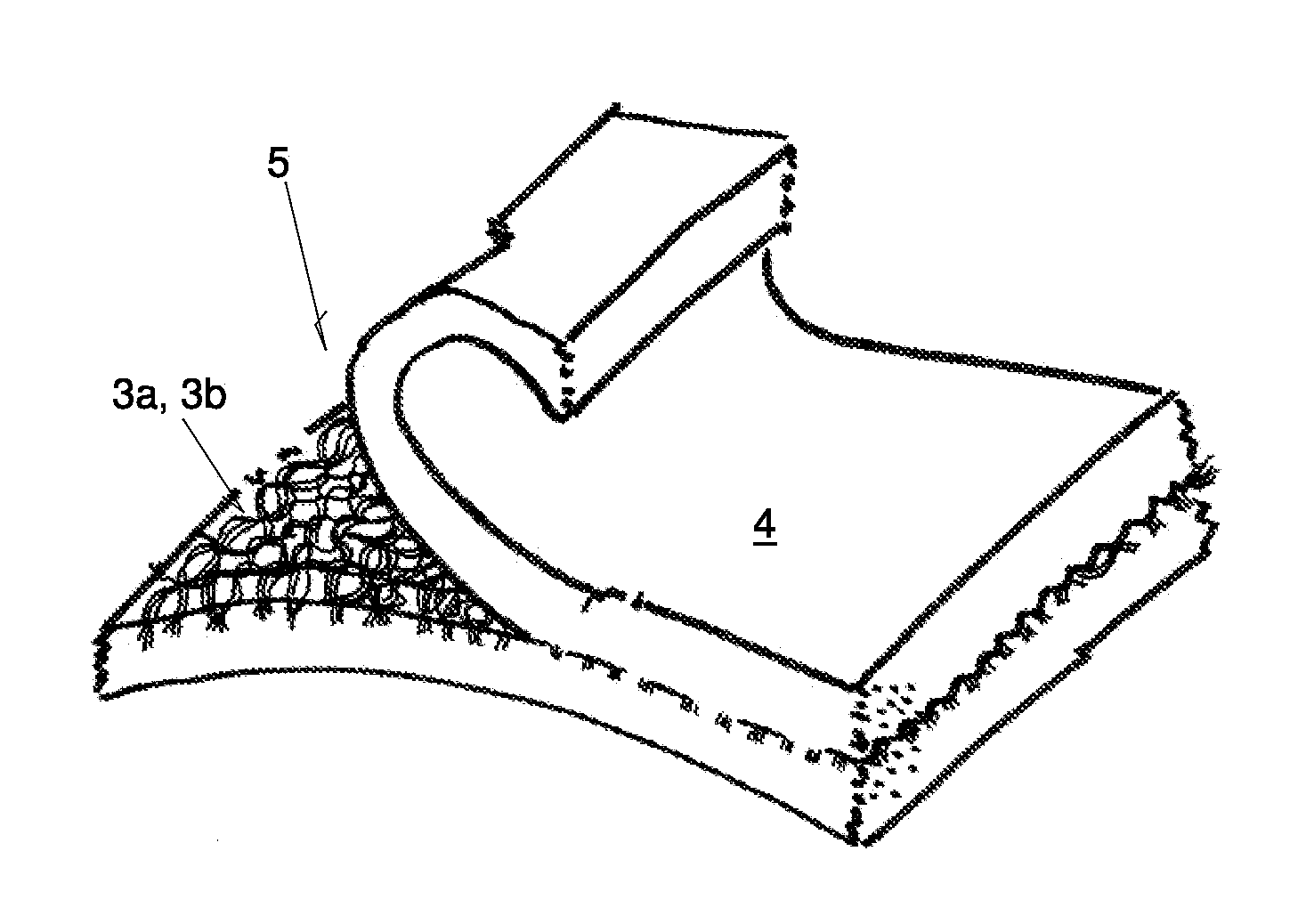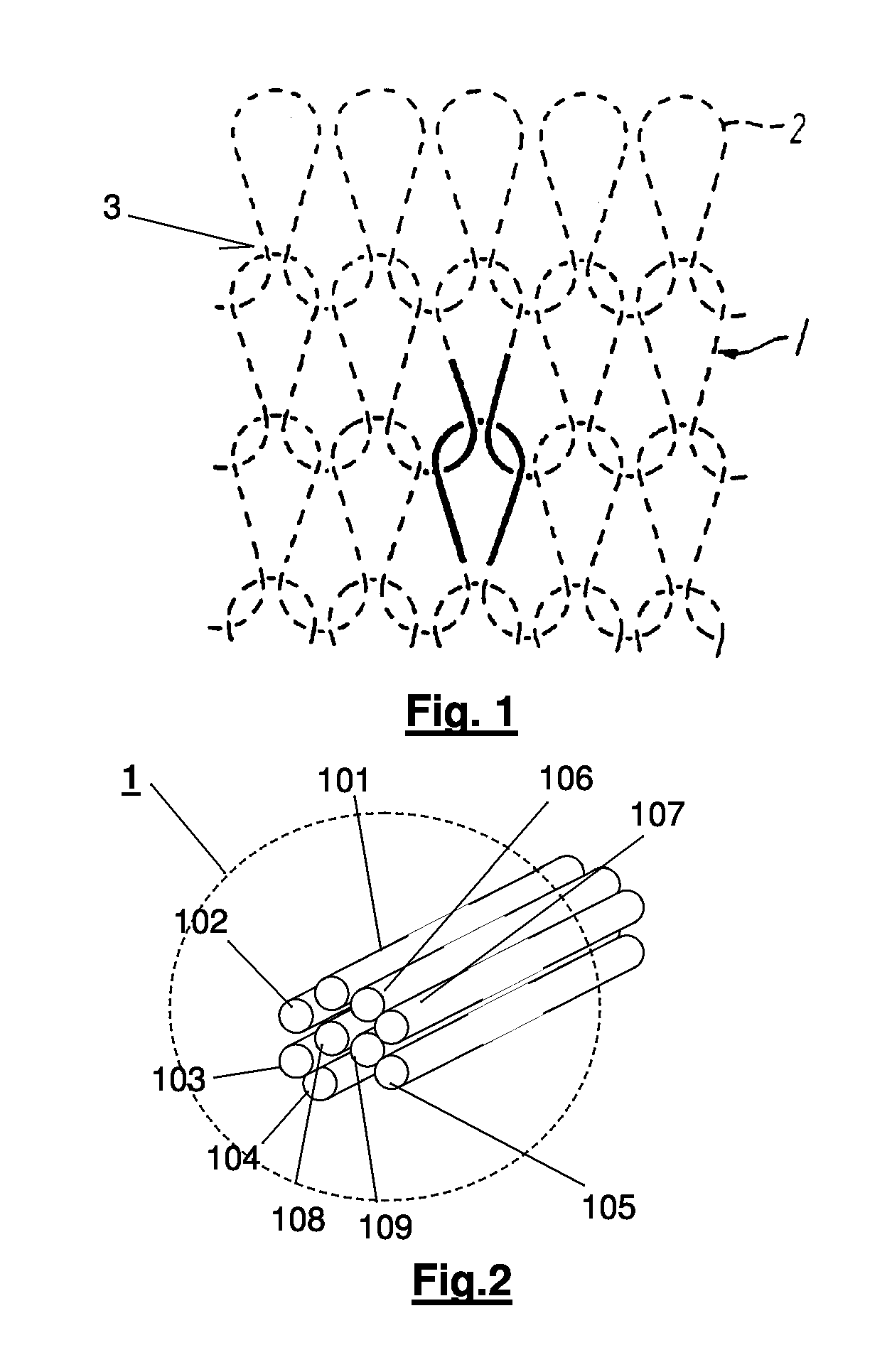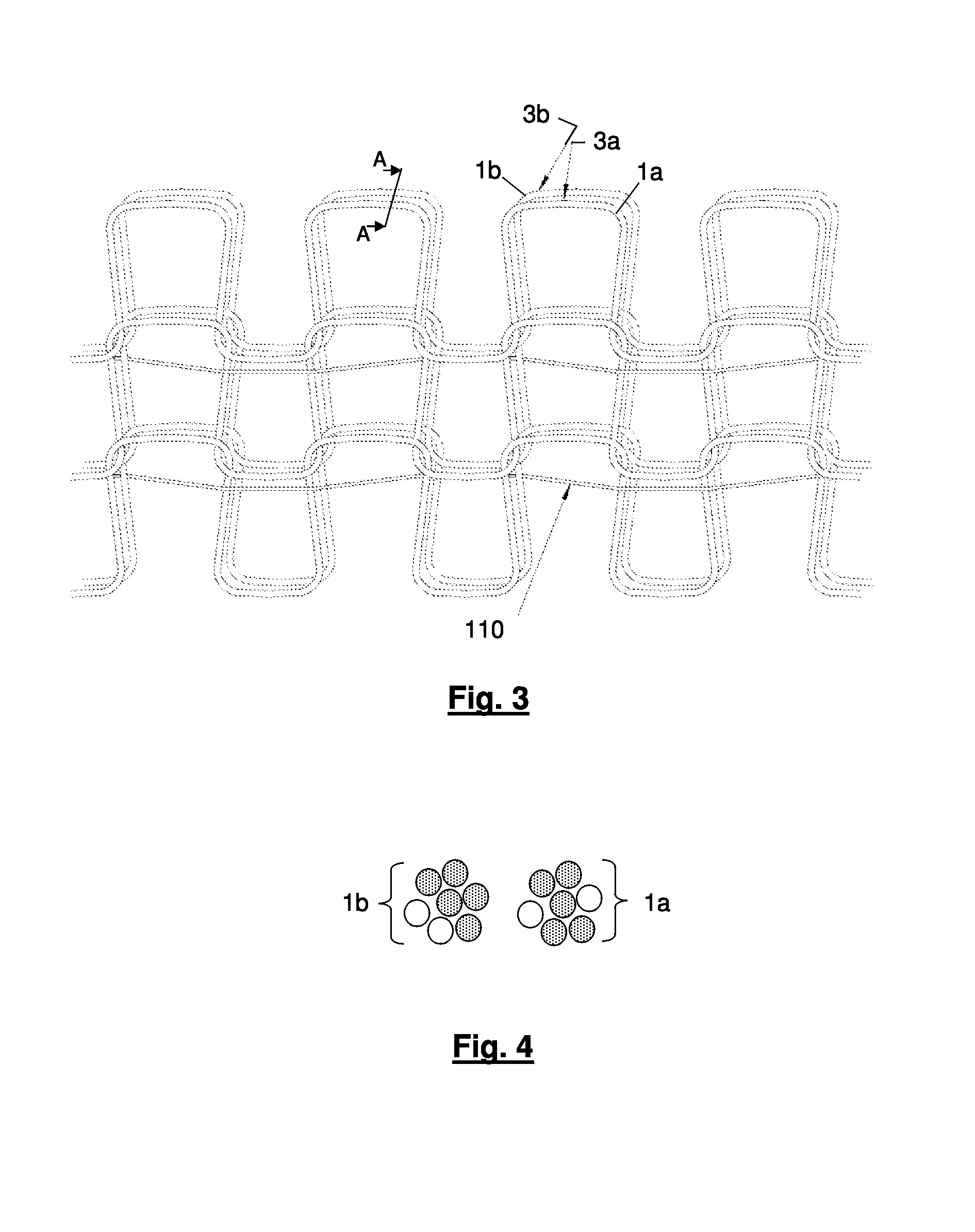Anti-vandalism fabric suitable for upholstering seats
a fabric and anti-vandalism technology, applied in the field of anti-vandalism fabrics, can solve the problems of difficult cutting of material, and achieve the effect of making cutting difficul
- Summary
- Abstract
- Description
- Claims
- Application Information
AI Technical Summary
Benefits of technology
Problems solved by technology
Method used
Image
Examples
example 1
[0048]The anti-vandalism fabric comprises a mesh in accordance with FIGS. 1 and 2, formed by a thread or threads each of which is in turn formed by a combination of:[0049]6 stainless steel filaments having a diameter of 0.07 mm.[0050]3 wool yarns of between 5 and 9 Nm.
[0051]The stainless steel filaments used are aisi 304 with a resistance coefficient between 110 and 160 kg / mm2 and an elasticity of 0 to 6%.
[0052]The mesh is embedded in a panel of non woven para-aramid fabric.
example 2
[0053]The anti-vandalism fabric comprises a stitched mesh formed by threads which are in turn formed by:[0054]10 stainless steel filaments having a diameter of 0.08 mm.[0055]4 wool yarns of between 5 and 9 Nm.
[0056]The stainless steel filaments used are aisi 304 with a resistance coefficient between 110 and 160 kg / mm2 and an elasticity of 0 to 6%.
[0057]The mesh is embedded in a panel of non woven twaron fabric.
[0058]The fabric according to Example 2 was subjected to the tests necessary for meeting the NF-F 00201 and EN45545 Standards, in both cases in a satisfactory manner.
example 3
[0059]The anti-vandalism fabric comprises two meshes sewn to one another forming a double mesh structure according to the FIG. 3. Each mesh is formed by a thread which in turn is formed by a bundle consisting of 5 stainless steel filaments having a diameter of 0.08 mm and 2 wool yarns. The structure thus comprises a total of 10 stainless steel filaments.
[0060]The stainless steel filaments used are aisi 304 with a resistance coefficient between 110 and 160 Kg m2 and an elasticity of 0 to 6%.
[0061]The double mesh structure is embedded in a panel of non woven twaron fabric.
[0062]It has been found that when said fabric is for upholstering seats, the seat recovers its original shape and no permanent creases are formed, such as the case of the previously described anti-vandalism fabrics having metal threads. Consequently, this cover provides the seat with anti-vandalism properties, great elasticity and comfort.
PUM
| Property | Measurement | Unit |
|---|---|---|
| diameter | aaaaa | aaaaa |
| diameter | aaaaa | aaaaa |
| diameter | aaaaa | aaaaa |
Abstract
Description
Claims
Application Information
 Login to View More
Login to View More - R&D
- Intellectual Property
- Life Sciences
- Materials
- Tech Scout
- Unparalleled Data Quality
- Higher Quality Content
- 60% Fewer Hallucinations
Browse by: Latest US Patents, China's latest patents, Technical Efficacy Thesaurus, Application Domain, Technology Topic, Popular Technical Reports.
© 2025 PatSnap. All rights reserved.Legal|Privacy policy|Modern Slavery Act Transparency Statement|Sitemap|About US| Contact US: help@patsnap.com



